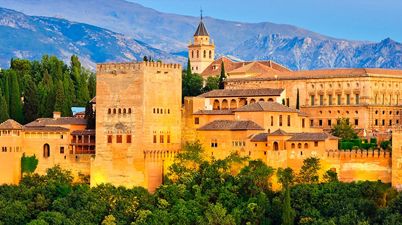This website uses cookies so that we can provide you with the best user experience possible. Cookie information is stored in your browser and performs functions such as recognising you when you return to our website and helping our team to understand which sections of the website you find most interesting and useful.

Iberico Ham Tour in Spain
14 Days Iberico Ham Tour
On this unique and pioneering “ibérico ham tour” centred around Spanish gastronomy in general and its Iberian ham culture in particular, you’ll uncover the secrets of this internationally acclaimed delicacy. But don’t worry, you won’t be just hearing about ham all day everyday! You’ll also get to explore and experience our country’s wonderfully rich gastronomy, culture and history.
We will take you to the four different regions of the country known for and specialised in the production of the famed Spanish Ibérico Ham: Salamanca, Extremadura, Jabugo and Los Pedroches. In between, you’ll also learn about our vibrant Spanish culture and get to sample our country’s diverse and world-renowned cuisine.
What’s more, not only will you explore Spain’s cultural and historic highlights, but you’ll also uncover some of its most unspoiled corners as we literally take you ‘off the beaten path’. On this fascinating two-week journey, you will visit local farmers and artisan producers who will teach you everything there is to know about our Ibérico Ham; from the curing process, to the art of ham carving, you’ll also enjoy our delicious gastronomy along the way and will get to taste fabulous wines all whilst learning about Spain’s incredibly rich history and experiencing our unique lifestyle, culture and traditions.
This is not your run of the mill tour of Spain, it is a true celebration of Spanish culture, history, gastronomy, wine, and last but not least, Jamón! Enjoy our Iberico Ham Tour!
Length of the Trip
15 Days / 14 Nights
Accommodation
4 stars hotels
Places to Visit
Salamanca | Extremadura | Andalucia | Madrid
Starting Point
Madrid
Ending Point
Madrid
Type of Trip
Custom trip
Transportation
Trains + private drivers
REQUEST INFORMATION
|
|
Why take this fascinating Iberico Ham Tour in Spain?
Health benefits of the acorn-feed ham
Iberian ham has countless health benefits substantiated by studies from prestigious universities. In 100g of iberian ham there are 33% of the proteins that we need for our day. The acorn-feed or “bellota” ham is also very rich in calcium and phosphorus, and also contains vitamins B1, B2 and iron. Acorns fed pigs have a higher proportion of unsaturated fats that lower cholesterol and counteract the effects of cardiovascular disease, improving the circulatory system.
The best iberian ham is rich in monounsaturated fatty acids like oleic acid, which is well suited for most recent dietary recommendations considered a healthy fat. The cholesterol content in the ham is very low, (30-40 mg/100 g), which is even lower than the rate of lean meats like chicken or turkey.
Discover a unique Mediterranean landscape named as “Dehesa”
The Iberian pig breeding area is called Dehesa, a Mediterranean pasture land and oak forest agroecosystem located in the South West of the Iberian Peninsula. It might be considered as one of the most successful and efficient examples of nature conservation and sustainable rural development. The four areas or designations of origin which produces almost the entire Iberian ham production are Extremadura, Guijuelo in Salamanca, Jabugo in Huelva and Los Pedroches in Cordoba.
Each of these areas have the ideal climate, soil and environment for the Iberian pig breeding and drying process. They also have large areas of fields to allow the pigs to graze and eat the precious acorns in the season when they fall from the holm oak trees (between November and February).
Animals are constantly moving around and therefore burn more calories than confined pigs. This, in turn, produces the finest kind of jamón ibérico. At least a hectare of healthy dehesa is needed to raise a single pig, and since the trees may be several hundred years old, the prospects for reforesting lost dehesa are slim at best. True dehesa is a richly diverse habitat with four different types of oak that are crucial in the production of prime-quality ham.
Learn about a breed that won’t be found anywhere else
The Iberian pig is native to the Iberian Peninsula and its origins can probably be traced back to the Neolithic, when animal domestication started and currently found in herds clustered in the central and southern part of Portugal and Spain.
The Iberian pig can be either red or dark grey/blac, with little or no hair and a lean body, thus giving rise to the familiar name pata negra, or “black hoof.
It is not just about eating delicious ham!
This round trip tour of 15 days starting and ending in Madrid, is a great mix of history, gastronomy, natural beauty and a lot of cultural immersion. It is fun, pleasant and a once in a lifetime trip!

Salamanca

Cáceres

Sevilla

Córdoba

Granada

Madrid

